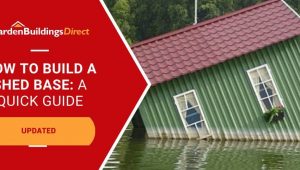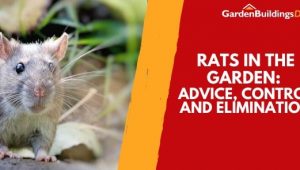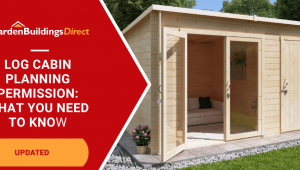Jump to:
If you aim to showcase a variety of plants in a greenhouse rather than use it solely for sowing, growing, and harvesting, you’re in the right guide. We’ve put together a list of tips and ideas to turn the space into a plant haven. Ready?
Greenhouse Plant Arrangement Ideas
Greenhouse gardeners use specific growing techniques to maximise space and crop yield. The same applies to exotic varieties and flowers—not just for healthy growth but for a better-looking setup too. Here are some ways to achieve this:
Vertical gardening
Vertical gardening is a method in which plants are supported to grow along vertical surfaces rather than along the ground. Examples include trellises, wall planters, and hanging baskets, all of which help maximise space.
A garden arch trellis works for climbing plants, while wall-mounted planters for foliage, and hanging baskets for flowering plants. (We’ll talk more about the plants you can consider in detail later.)
Vertical gardening is a great way to grow more without overcrowding the floor, and it’s perfect for small greenhouse ideas. And if you think about it, displaying plants on walls adds to the visual appeal and doubles as interior decor, too!
Raised beds

Raised beds sit on top of existing soil and are supported by frames, usually made of timber. They’re great for defining planting areas and keeping everything structured, as plants won’t be growing all over the place on the ground. This creates a more intentional layout, where you can group each bed by variety.
On top of that, another thing we like about raised beds is that they improve drainage, soil quality, and accessibility. This, in turn, makes it easier for plant roots to grow and helps with temperature control, which is important in a greenhouse.
Tips: If you’ve got a wooden greenhouse, timber raised beds are a great match—they just fit, don’t they? Also, make sure to leave enough space between beds and position taller plants so they don’t block light from the shorter ones!
Hydroponics
![Hydroponic greenhouses with micro irrigation.]](https://cdn.gardenbuildingsdirect.co.uk/blog/wp-content/uploads/2025/04/greenhouse-growing-plant-paradise-2.jpg)
With hydroponics, you bypass the need for soil and grow plants in water-based, nutrient-rich solutions instead. This reduces water usage, minimises weed problems, and allows for year-round growing. Plus, without soil, your greenhouse stays tidy while letting your plants take centre stage.
You don’t have to go all-in on hydroponics, though. Feel free to mix it up with vertical gardening and raised beds. But with this setup, you have a unique way to show off your plant paradise—and that mist-like effect makes it even more interesting!
Have a read of this guide to learn more: Creating a Hydroponic Greenhouse Set-Up
Best Plants for your Greenhouse
We’ve sectioned this list by growing technique, so you have more options to choose from.
For vertical gardening

(Image Credit: Wikimedia Commons)
- Climbing roses: Grandiflora and hybrid tea rose varieties thrive well in greenhouse environments, and they look pretty too! Queen Elizabeth and Rose Gaujard are lovely choices from the Glandiflora family. Pascali (white), Casanova (golden yellow) and Carina (bright pink) from Hybrid Tea would also look charming in your greenhouse.
- Clematis: Consider Enham Star—it has an early bloom time and it smells like an almond! Tetrarose is also a good Clematis variety, especially if you’re into pink flowers that are low in maintenance.
- Ivy: For a touch of nature colour, Irish Ivy can adorn your greenhouse with its emerald green leaves. This natural climber can be trained to grow up your greenhouse walls and trellises.
- Strawberries: Seascape, Albion, and Tristar have consistent fruit production throughout the season. And the best part is that they’re edible! Definitely a treat to have in your plant paradise.
For raised beds

- Lavender: No greenhouse plant paradise is complete without lavender in its beds. English varieties, such as Hidcote and Munstead, are good options. Not only do they look stunning, but they also smell amazing! These soft purple flowers also have silvery-green foliage that brings a nice contrast to other plants.
- Dahlias: Duet dahlias are very prolific when grown in a greenhouse and put on a bold, eye-catching display. They’re perfect for beds near the entrance or along the pathway (if there’s room for one). Their upright growth also makes them easy to arrange alongside other flowers.
- Salvias: Have something with long flowering periods on your greenhouse raised beds with Hot Lips, Silas Dyson, and Cambridge Blue varieties. Their tall flower spikes add layers to the beds, making the space look fuller without making it look cluttered.
- Herbs: Greenhouses are for growing plants anyway, so why not add another edible variety that looks good too? Go for rosemary, thyme, and basil. Rosemary grows tall and bushy, so it’s best placed towards the back or centre of the bed. Thyme should go near the edges since it stays low and spreads. Basil needs a spot with good airflow and plenty of light, but not too much direct heat.
For hydroponics
- Orchids: You can’t go wrong with Moth Orchids when it comes to eye-catching flowers for hydroponics. They’re known for their elegant arching stems and long-lasting blooms in pure white, vibrant pink, and purple.
- Peace Lilies: Aside from their attractive dark green foliage, Peace Lilies are known for their air-purifying properties. They help filter out toxins and boost humidity, making your greenhouse paradise a healthier place for your plants.
- Pothos: Golden Pothos are a classic choice, with trailing vines and heart-shaped leaves streaked with yellow. Or you could go for the Marble Queen variety, which has striking white and green variegation to add a bright contrast to your hydroponic setup. Neon Pothos will stand out too, with its vibrant lime-green leaves.
Greenhouse Interior Ideas
Now that you know the best growing techniques and plants to create the greenhouse plant paradise of your dreams, the next step is to add more character with these greenhouse interior ideas:
Greenhouse lights
One thing about greenhouse lights is that they work for both growing and decoration.
Grow lights are a specialised setup for greenhouses that don’t get much natural sunlight. They mimic sunlight, giving plants the right kind of light for photosynthesis and growth.
LED grow lights are perfect for small spaces and beginners. They’re energy efficient, too, and have customisable light spectrums. This means you can adjust the colours (wavelengths) of light to suit different plant growth stages. For instance, red light is good for encouraging flowering.
Greenhouse decorative lights, as the name suggests, are for setting the mood inside. Since it’s a plant paradise, you’ll likely have guests coming around to see your displays, so it’s nice to have lights that can light up the greenhouse at night or highlight a specific plant.

Outdoor string lights can go along the ceiling beams, giving you an overhead glow without getting in the way of your plants. Small LED spotlights are also great for highlighting plants or features, like a fountain (if you can fit one inside). Battery-powered lanterns around seating areas, like a garden bench, sound nice too—perfect for admiring your plants even at night.
Water features
With a water feature, your greenhouse plant paradise will be more relaxing—not just for your plants, but for you and anyone who steps inside. A small fountain will do; the sound of running water is enough to create a calm atmosphere. It also helps with humidity, which is great for plants like orchids.
If you’re growing anything that likes a bit more moisture in the air, like peace lilies, a water bowl works too. Either way, a water feature helps keep the air fresher and reduces dust. Simple, but effective!
Light catchers
They add a bit of sparkle to your greenhouse while making the most of natural light. Hang them near the panels where they’ll catch the most sunlight. Once in position, they’ll reflect or refract the light, creating a colourful, sparkling effect. This can also help direct light to other areas of the greenhouse.
Stone or wooden pathways
Pathways are great for creating walkways, so it’s easier to move around without trampling on plants (if there are any planted directly in the soil) or messing up the soil. If you have a big greenhouse, it’s worth considering.
They help with easy access to all areas, especially when tending to different plants. Not only that, but they also reduce the risk of muddy ground.
Round-up
Knowing which growing techniques suit your greenhouse setup, along with the ideal plants for it, is a great starting point. Vertical gardening, raised beds, and hydroponics can all work together, especially if the space allows. If not, you can stick with the first option to maximise your available space.
As for the plant varieties, you’ll want flowering plants with bright colours, large leaves, and an overall attractive look. And to make them stand out even more, the greenhouse interior ideas above can help with that!
We hope this guide has given you some inspiration to build your greenhouse plant paradise! We also recommend adding a small potting shed (if you have the space) near the greenhouse, where you can store and organise all your gardening essentials in one place. You can even do your potting and start your seedlings there. Nice, isn’t it?
If you haven’t started your greenhouse journey yet, be sure to read our guide to picking a greenhouse.
Next on your reading list: How Often Should You Water Greenhouse Plants?





